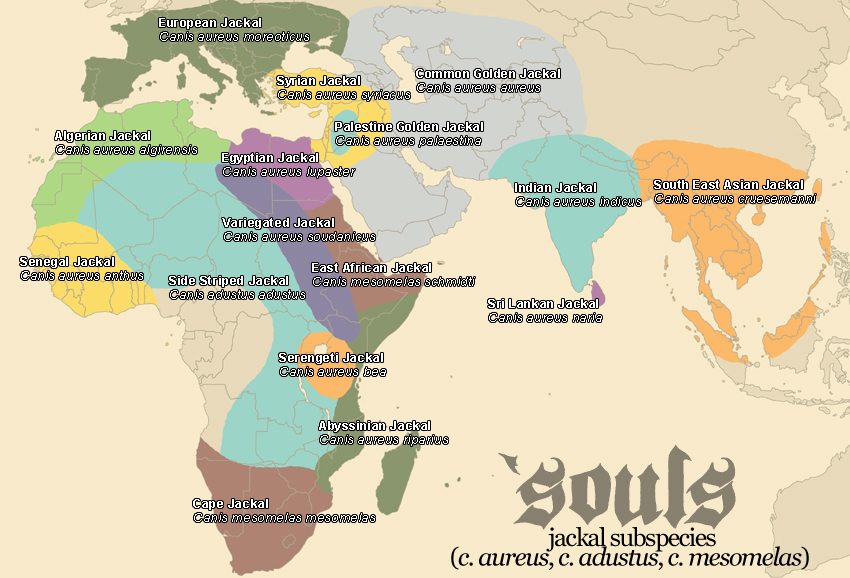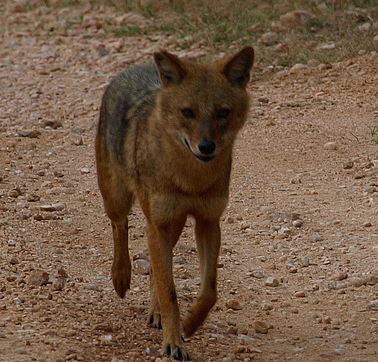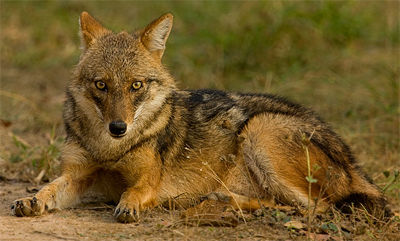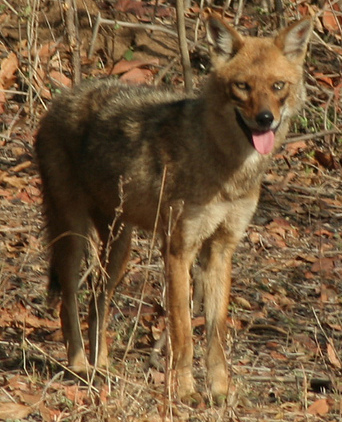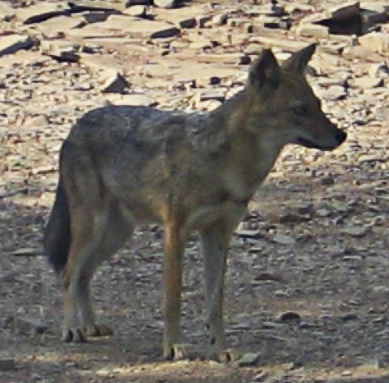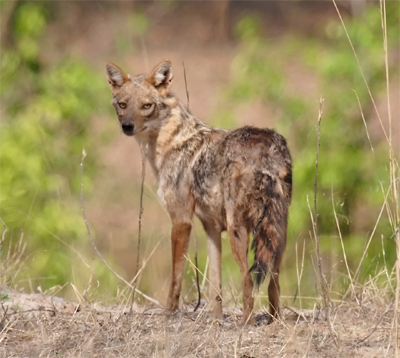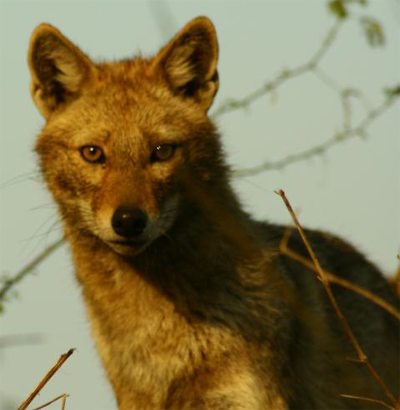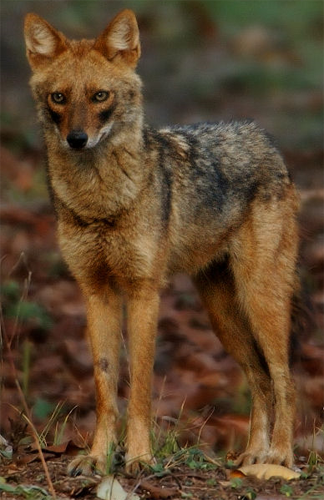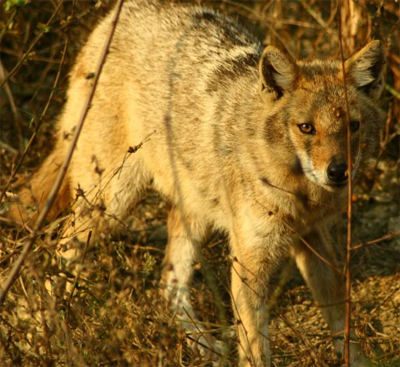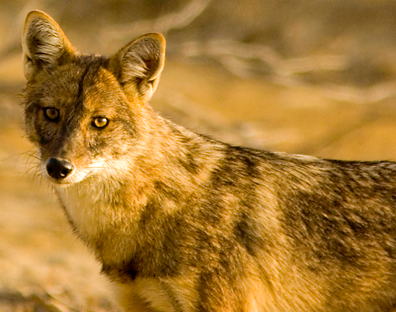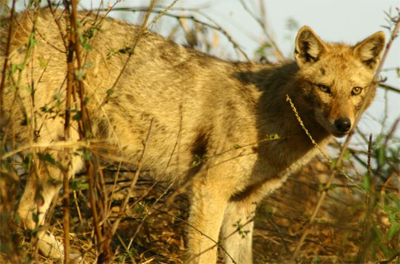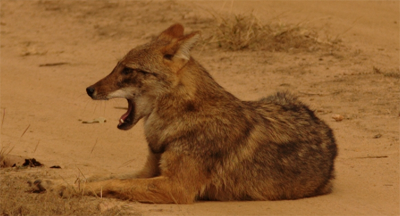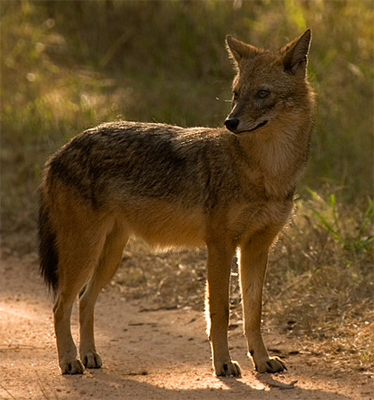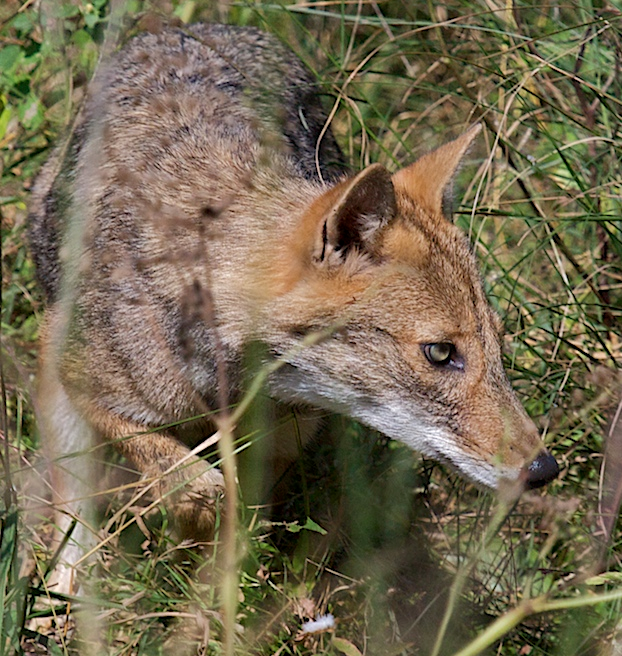Indian Jackal (''Canis aureus indicus'')
See our RP Guide for more extensive information regarding jackals.
On this page... (hide)
- 1. Common Names
- 2. 'Souls Range
- 3. Appearance
- 4. More Images
- 5. Citations
1. Common Names
Indian Jackal, Himalayan Jackal, Hindi Jackal
2. 'Souls Range
Native to India, Bhutan, Myanmar and Nepal.
3. Appearance
Canis aureus indicus, from squicker@Flickr
This canine tends to possess a coat of a much richer and more vibrant coloration than that of the Common Jackal; undertones of red, white, black, and various shades of cream, tawny, and buff are common on this species. This subspecies markings are more clearly defined than that of the Common Jackal.
It is just slightly larger than the Common Jackal, though this subspecies is built differently, with a different facial and teeth structure than the Common Jackal. Common size measurements are 39 inches (100 cm) in length, 14 - 18 inches (35 - 45 cm) high, and 18-24 lbs (8 - 11 kg) in weight.
3.1 Other Characteristics
Social Structure
Though jackals within a pack structure will often consider tigers an aggressive threat, loner Indian Jackals without a pack will occasionally form relationships with tigers -- that is, they will find a tiger or multiple tigers to trail and follow, and the jackal will alert the tigers to a potential kill. "Tigers have been known to tolerate these jackals: one report describes how a jackal confidently walked in and out between three tigers walking together a few feet away from each other."
Survival
These jackals are largely Luperci; the virus has almost completely claimed these canines. Of course, as their range is quite large and includes parts of the Himalayan mountain range, it is always possible for isolated pockets of non-Luperci to exist somewhere. These jackals have, of course, benefited from the Luperci adaptations provided to them; humanized lifestyles are becoming more and more common throughout this subspecies. Much of their prior competition from other predatory species has been extinguished thanks to their adaptation of human weapons, and Indian Jackals are quickly becoming the dominant species on the Indian subcontinent.
4. More Images
5. Citations

